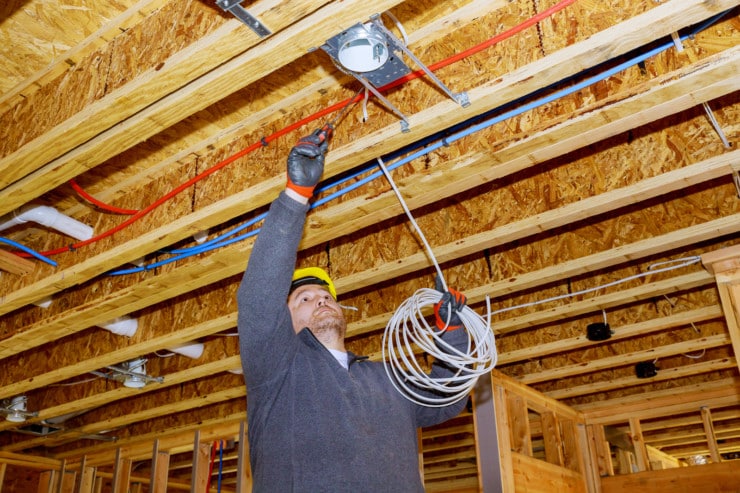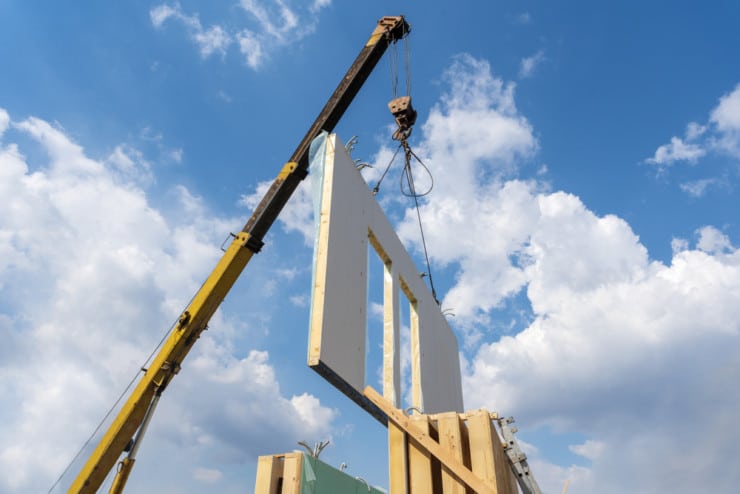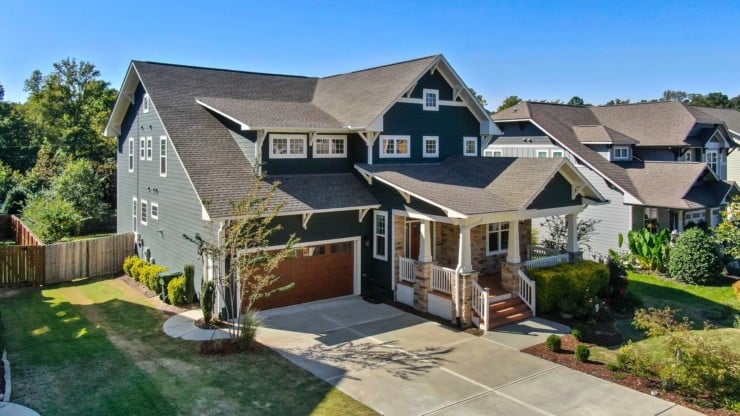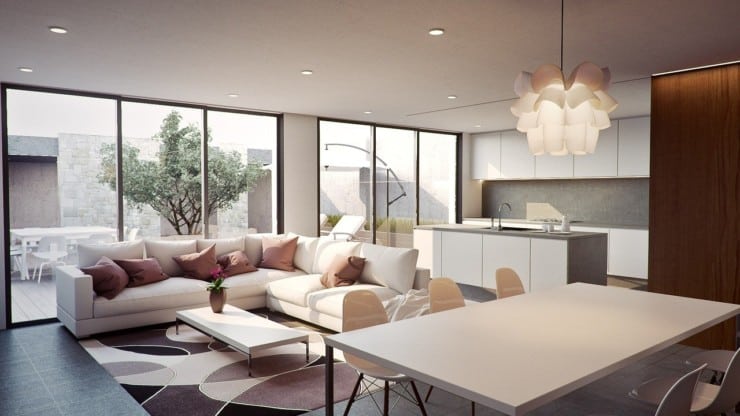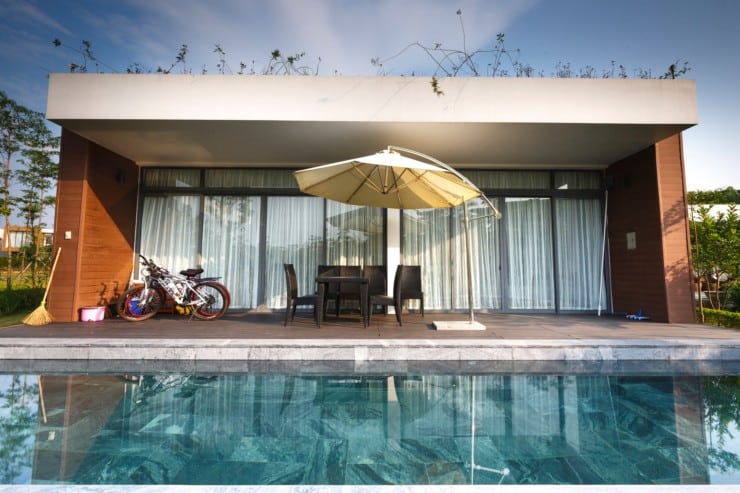Can a Modular Home Be Bricked?
The brick exterior of a residence is what provides the timeless appearance and ambiance that many individuals desire when purchasing their ideal home.
But, can a modular home be bricked?
The answer to that question depends on what kind of materials you plan on using.
In general, modular homes aren’t designed to accommodate bricked walls.
Because of the HUD code, federal law prohibits structural changes to modular homes that will make them more expensive.
These additions can lead the modular home to be classified as a site-built home with a higher mortgage insurance premium.
However, there are many ways you can add a brick facade to a modular home after it has been installed on your land.
How Much Does It Cost To Brick A Modular Home?
The cost of bricking a modular home depends on the type of bricks you’re planning to use, the amount of brickwork involved.
Any extra features such as a decorative addition will come at an extra cost.
On average, bricking a home can cost anywhere from $7,200 to $24,000. This breaks down to about $5 to $15 per square foot.
The cost of bricking a modular home can be justified in two ways.
First, you may want to brick your house for the sake of aesthetics alone since it gives your house that classic look and feel many people are looking for when they buy their dream home.
Second, if you’re going with an all-brick facade on a very modest modular home, you may be able to save a significant amount of money upfront.
What Type Of Brick Can I Use For My Modular Home?
As with any home project, you’ll want to take into consideration your budget before deciding on one specific material type for your modular home’s exterior facade.
There are many affordable ways to add brick accents that will make it look like a brick home without having to actually purchase and install real bricks.
Here are some common brick types used for home facades:
Stone Bricks
Stone bricks are typically made of limestone or sandstone and can be very expensive depending on the type you choose.
Clay
These are the most common type of brick in homes because they’re durable, cost-effective, and easy to install.
They can come from a variety of sources including factory-made clay or reclaimed materials such as recycled bricks that have been salvaged from demolished sites.
Stainless Steel
You’ll need someone with expertise to install these since they’re not designed to be put in a mortar and cement-like traditional bricks.
They’re made of a metal alloy that has a stainless steel appearance.
Paint-Grade Stucco/Cement Plaster With Brick Veneer
This is a cost-effective way to add brick appeal to an older or less expensive modular home.
The downside is it will need to be repainted every few years.
Stone Veneer Tile
Stone veneer tiles are a quick and easy way to add brick appeal without the time or expense of installing real bricks.
How To Brick A Modular Home
If you’re planning on adding some type of stone facade such as natural limestone or sandstone, then the process is relatively straightforward.
You can hire a mason or an experienced contractor who specializes in these types of projects for this type of project.
You’ll need to make sure your modular home has a foundation that will be able to cover the area where you plan on installing the stone brick facade and have plenty of space for mortar joints.
If you’re going with paint-grade stucco/cement plaster, then there are three different ways this can be installed:
- Over the exterior siding of a modular home
- Over an existing brick veneer such as wood, vinyl, or aluminum
- As decorative stucco on interior walls and ceilings
The first method involves applying cement plaster over the outside of your current siding surface.
For this type of installation, you’ll need to remove all the siding and have a prepared surface to install the stucco over.
This type of brick facade is not recommended on modular homes that are in more humid climates because they’re prone to cracking if moisture gets behind them.
The second type involves applying paint-grade stucco/cement plaster as a “veneer” over an existing brick veneer such as wood, vinyl, or aluminum.
The process for this type of installation is similar to the first method with a few exceptions:
- The surface must be prepared before installing (preparation involves removing any old mortar that’s on top and then rebedding your bricks).
- If you’re using reclaimed bricks, they’ll need to be cleaned and sealed.
The third option is for interior decorative installations that are not visible from the outside of your modular home.
This type can also include wall or ceiling coverings in a powder room or hallway.
You won’t have any mortar joints with this method, so it’s easier to install than other types of brick facades.
Brick Alternatives
Natural Stone Veneer Tile
Natural stone veneers are a quick and easy way to add brick appeal without the time or expense of installing real bricks.
They are actual stone products that are usually combined together in a mold to make a uniform pattern.
Stone Veneer Stucco
The stone veneer stucco is made of cement-based plaster and has the look of traditional bricks but they’re lightweight in comparison with real brick facades so you won’t have to worry about them breaking your modular home’s foundation.
Faux Brick Exterior Panels
Faux brick panels are made of high-density polyurethane products that have a mortar joint design.
The material used is durable and will not fade or rot as the paint may over the course of time. They can be cut to fit around doors and windows.
This is a great solution for modular homes that are in more humid climates since they’re not as prone to cracking as an actual stone brick facade would be.
Final Thoughts
If you want your modular home to look like a traditional brick house without the expense of installing real bricks, then there are several options for you to consider.
You’ll need to research each option to see which one will suit your needs best.
You’ll also want to make sure to work with a professional contractor since there are many steps involved in the process.
When a modular home is successfully bricked, it can preserve the life of the home and even raise its overall retail value.
Make sure to do your research to make the best choice so that you can live in a fully customized dream home.


